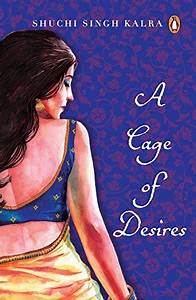If one had to pick out the one female protagonist who broke away from this claustrophobic stereotyping and set the trend rolling for raw and real characters, it’d be Vidya Balan’s portrayal of Silk Smitha in The Dirty Picture. Despite the fact that the movie riddled with dialogues like ‘Mujhe jo chahiye uska maza sirf raat ko aata hai’, moans and humps, a lot of cleavage, sex, cigarettes, alcohol came under the scanner for its bold content and raised more than a few eyebrows, its runway success at the box office was a telling sign of the audience’s readiness to embrace the depiction of female sexuality. Related reading: 4 reasons why we think Indian women are having more sex
Movies that made a difference
Female characters with strong sexual personas have existed in the past too. Case in point: Paro in Dev D who is shown to help herself to a liberating orgasm. But these characters and such portrayals were few and far between until the arrival of The Dirty Picture. Even those who expressed shock and outrage were at least secretly admiring the arrival of a female heroine who wears her desires on her sleeve. This acceptance, even if half-hearted, has led to a churning in the world of cinema and literature. Parched, which traces the journey of four women in rural India holding the mirror to prevalent misogyny through their discourses on men, sex and life at large. Lipstick Under My Burkha, which once again takes us through the journey of four ordinary women and their secret acts of rebellion to fulfil their burning desires and passions. Margarita With A Straw, that beautifully brings to life the sexual desires burning up a teenage girl with cerebral palsy and the inability of those around her to understand the needs of her body. More recently, the all-girl-starrer Veere Di Wedding that created ripples with its masturbation scene, and Netflix series Lust Stories that showcases the sexual longings and tribulations of four very distinct female characters, driving home the point that sexual desires transcend the confines of age and social status. Related reading: Here’s how men and women approach sex differently
A story of a jaded housewife yearning for love
Yes, all of these characters have attracted the ire of the censor board, the sanskari brigade and online trolls, but they are definitely here to stay. In the literary space, a trend-setting celebration of a grey female protagonist who burns with desire, errs, falls and rises from the ashes comes in the form of Shuchi Singh Kalra’s A Cage of Desires. The book has been making waves for its poignant portrayal of a jaded middle-aged housewife who longs for physical and emotional fulfilment. Her loveless marriage and surging desires lead her to step outside of her marriage. Normally, one would label this as infidelity, but once you empathise with the character at a deeper level, you are almost compelled to justify her action. Is love not an inherent human need? Does a woman have no right to seek it for herself? The man she shares her life, and occasionally her bed, with is incapable of comprehending her needs, let alone fulfil them. This constant lack of fulfilment of her emotional and sexual needs also leads to the creation of an alter-ego, Maya – a writer who pens books dripping with sexual overtones and is secretly loved and publicly hated for it. An apt summation of how we, as a society, react to any discourse on female sexuality. Besides giving birth to Maya, Renu’s unrequited desires also put her on the path on self-satisfaction and transgression of the ‘boundaries’ of marriage. Related reading: Reasons why women have extramarital affairs
Titillation without obscenity
The book delivers these moments of longing and fulfilment in almost poetic prose that titillates without seeming obscene. “She clutched at his shoulder and sucked on the palm of his hand to muffle the screams that were threatening to escape,” she writes, describing Maya’s orgasm. “Her hand and her fingers strummed on her nerve endings, releasing intense waves of pleasure from deep within the pit of her stomach,” reads a masturbation scene from the books. We still have a long way to go before female sexuality is accepted for what it is. The fact that it is being finally acknowledged in cinema, art, literature and social discourse in itself feels like a giant leap forward. As long as stories like A Cage of Desires are being written and read, we are moving forward on that path of acceptance, slowly but surely.

